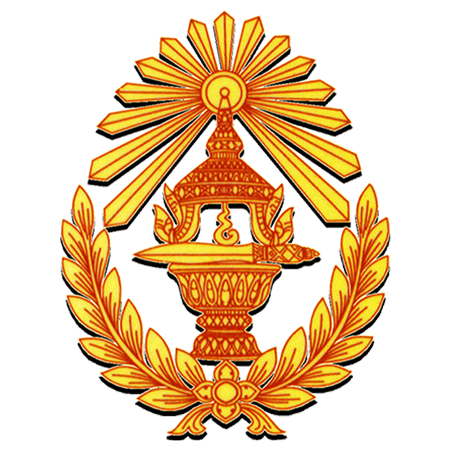Today marks the 45th anniversary of the day of remembrance of the journey to the overthrow of the Pol Pot genocidal regime, which we are celebrating this year, along with the inauguration of achievements at the Koh Thmor X16 historic military site […] first of all, let me express my gratitude to His Excellency Phạm Minh Chính, Prime Minister of the Socialist Republic of Vietnam and the delegation for accepting my invitation to attend the ceremony […] I thank His Excellency Prime Minister Phạm Minh Chính for giving me the opportunity to burn incense at the place where I did the same 45 years ago and to visit the (Vietnamese) people to thank them for saving my life […]
(1) The Journey 45 Years Ago to Liberate Cambodia from the Genocidal Regime Led Cambodia to the Paris Peace Agreement; the Win-Win Policy, National Unity and Territorial Unification; Low-Middle-Income Country and Poverty Rates Below 10%
Today, the commemoration of the 45th anniversary reflects some of the points that I should have raised for my compatriots as well as all the foreign friends who were invited to participate today, including Ambassadors, Chargé d’Affaires and foreign friends as well. The point for the study of history is that what could have happened if I did not do what I did (leaving and liberating the country) which is the first question and if I did what I did (leaving and liberating the country) is the second question.
For the first proposition I should ask and answer myself in advance – clearly, I would have died and I would not have known what happened after that. At that time, no one could ask for rights/freedoms from Pol Pot. If I did not take action, I must be dead. If I am dead, then I do not know what will happen next – whether the Pol Pot regime continue to kill people or the Pol Pot regime changes its attitude, or other patriots take up the duty to liberate the country […]
The second proposition is what happened when I took my actions. What it shows is that the 45-year journey marked clearly the liberation from the genocidal regime of Pol Pot, which led to the end of the war through the Paris Agreement and continued its implementation to towards a final goal, which is the implementation of a win-win policy to unite the nation and unify the territory and channel Cambodia from one stage to another until Cambodia reaches a low-middle-income country status with a poverty rate below 10% […]
(2) Escaping to Vietnam 45 Years Ago to Re-organize the Struggle – One of the Four Options
This year marks the 45th anniversary of my escape (from the genocide regime of Pol Pot) to Vietnam, and this year marks the 55th anniversary of the establishment of diplomatic relations between the two countries. I do not want to go into details about what happened on the 20th (June 1977) because all of these reminders are painful and difficult for me to describe, but I cannot avoid talking about them […] I had up to four options at the time. The first is with the armed force under my command […] about 1,500 troops to occupy Memot, Snuol and other neighborhoods […] but it came to my mind that it was a risk as in a week or half a month, this rebel army would have died (from fighting the main army of Pol Pot). The second option was for me to withdraw to the Socialist Republic of Vietnam to organize another struggle. The third option was to do nothing and let Pol Pot capture and kill like everyone else. The fourth option was to commit suicide […]
(3) Crossing into Vietnamese Territory; Looking Back at Cambodian Territory with Tears – at 13 Years Old Separated Parents; at 25 Years Old Separated from the Country
[…] I have made it clear that we are not able to cross to Vietnam at the military line because on the one side we could have been the target of pursuit and on the other those soldiers could have joined us to leave for Vietnam. If we bring more troops into the territory of Vietnam as a sovereign country, and that had already had conflict (with the Democratic Kampuchea), armed clashes could have happened. The circumstance was that the Pol Pot regime had already launched attacks on Vietnam in some areas […] (in search of asylum in Vietnam, we cannot take a big troop (with) […]
I was able to leave before 9pm […] that was the saddest time of my life. Crossing into Vietnam, I returned to Cambodia with tears and said in my heart that (it was so sad that at) the 13 years of age, I was separated from my parents due to lack of schooling and at the 25 years of age I had to leave the country because of the butcher regime. This is what I remember. This morning, to burn incense out there, I also shed tears at that place. I should finish (my description). I cannot go on because (it is too difficult to) control (emotions) about my sad story from 45 years ago […] a young man who is only 25 years old leads a resistance movement […]
I foresaw that we might end up in chains (while we get to Vietnam). Instead, I received a welcome with the food that the Vietnamese people cooked for us. We have not eaten properly for a year already. On the day that I started to reveal that I was against the Khmer Rouge […] at about 2pm I ordered the army […] to open barns of about 20 metric ton rice to feed. Clearly, by then I show my face (as the one to oppose the Democratic Kampuchea) […] I had had to write a letter to my wife. The song – One Difficult Letter to Write – has been released nationwide […] we are also making a film […] and it may be released in 2023.
While writing a letter, (the most difficult part was) what I could tell my wife of where we were going […] I was not sure of anything even whether I was killed after writing this letter or we were to get ambushed (on the way) out to the Vietnamese border by any force. We cannot say what could have happened. In the end, I chose a word, “To Rani, when you read the letter, I have already gone so far that I did not even know where I was.” This is what was written in the letter at that time […]
(4) The National United Front for Salvation of Kampuchea was born on December 2 – Military Organization Came First; and Political Organization Came After
[…] The military organization of the National United Front for Salvation of Kampuchea (NUFSK), a movement for the overthrow of the genocidal regime of Pol Pot, began to build an orderly military unit on May 12, 1978. If we compare the two fronts, the front of Prince Norodom Sihanouk, founded on March 23, 1970 in Beijing, with the front of December 2, 1978, they have different capabilities […]
The difference is that in 1970, the United National Front of Cambodia, led by Prince Norodom Sihanouk, the Father of the Nation, was only a political organization. There is no armed force organization yet. To be honest, according to historical factors, at that time along the Cambodian-Vietnamese border there were Vietnamese troops. Behind this place is what we called O Sampoch. This stream is where the Viet Cong came to buy rice. I reported to the Marquis in the forest at O Sampoch on April 4, 1970 […] and was sent for training and fighting at the Snuol barrack […]
Cambodia helped Vietnam and Vietnam also helped Cambodia. His Excellency Pham Minh Chinh just said that without the supply of logistics from the south and from Cambodian territory, it would be difficult (for the liberation efforts of South Vietnam) […] the Cambodian National United Front in 1970 was a political organization, following which the military came into existence, not be known of the date. But the National United Front for Salvation of Kampuchea came into existence on December 2, in a process that the military organization came first and the political organization came after […]
(5) A Single Character in the 45 Years History; Vietnam Helps Cambodia with Training and Materials, Cambodia Takes Political Responsibility; Cambodian Combatants Remains Repatriation Suggested
That’s a turning point in history. A single character connects events for 45 years. This character has been associated with national liberation events since the struggle to overthrow Pol Pot, rebuilding the country, curbing hunger, and the subsequent process of negotiations. In terms of historical factors here, […] I’m not the army commander but the creator of the army […] I went to Vietnam through this border pass in March (19777), and in December 1977, I returned and took the National Road 7 making my journey to Da commune. In March 1978, I returned to Koh Thmor. On the Vietnamese side, there was General Tran Van Tra, then Deputy Chief of Staff and Commander of the 7th Army Division, who agreed to help us build an army.
After meeting with General Van Tien Dung, General Staff of the Vietnamese People’s Army on September 27, 1977, General Tran Van Tra told me: “Vietnam only provides support for logistics, weapons and training. But politically, the Cambodian side is responsible.” I replied, “I am responsible,” and I said, “No one knows Cambodia better than Cambodians” […] there have been some confusion here in the past. I should elaborate again that we established the unit 125 – means the unit established on the 12th day of the fifth months – not in Long Khanh, but in Thủ Đức […]
I would like to make a point here for Samdech Pich Sena Tea Banh as well as other leaders (to consider). Vietnam gave us land, in Vietnam, to keep the remains of my 49 combatants. I cannot find their families. I have to keep their bodies in Vietnamese territory. Now, I am asking you to please consider whether to repatriate the remains from Vietnam land back to Cambodia, using this historical site as the location to lay them […] Vietnam is also repatriating the remains of Vietnamese voluntary troops back to Vietnam. It should also be time for the repatriation of the remains of NUFSK combatants. I suggest placing them in this historic area as we cannot find their families and every June 20 we can come and pay our respects […]
(6) May 1978, Together with Samdech Heng Samrin, Samdech Chea Sim in the Eastern Zone, Expanded the Struggle to Establish the National United Front for Salvation of Kampuchea
The turn of the journey that began on June 20, 1977, came to the establishment of the National United Front for Salvation Army on May 12, 1978. That is an important basis to unite with the political organization, which is the National United Front for Salvation of Kampuchea. What I am most happy about is that the armed forces, which I and my colleagues named – the armed forces of the National United Army for Salvation of Kampuchea […] came into operation in Memot district, Snuol district and deep into Dambe district. Coincidentally, in May 1978, Samdech Heng Samrin, Samdech Chea Sim revolted in the Eastern Zone. We joined hands to expand the resistance, and we rallied with other resistance forces to form the National United Front (for Salvation of Kampuchea).
What I am happy about is that when it comes to discussing political programs among the four groups that met, because the group under HE Say Phuthong and Samdech Pichey Sena Tea Banh in Thailand was unable disclose […] (as I suggested) the other three groups accepted the name of the National United Front for Salvation of Kampuchea. Therefore, we are not worried about changing the name of the Armed Forces […] as the armed forces is already known as the National United Army for Salvation of Kampuchea. We also use the same name for the creation of the National United Front for Salvation of Kampuchea.
(7) The Khmer Rouge Trial Provided Justice for the Cambodian Resistance Forces; Two Possibilities Considered for the Country’s Liberation
It was through the establishment of the National United Front for Salvation of Kampuchea on December 2 that we set out to liberate the country on January 7, 1979. History also records the intervention of the Vietnamese army to save the people of this country from the genocidal regime of Pol Pot. Anyone wishes to know if the Vietnamese army intervened to save the Cambodian people was right or wrong, they should just ask the UN and the hybrid court (Extraordinary Chambers in the Court of Cambodia created by the government in conjunction) with the UN, what does the verdict of Pol Pot trial mean? It is a recognition by the United Nations that Vietnam’s actions are right. If Vietnam’s actions are not right, there is no need to prosecute the Khmer Rouge.
Some people accuse me of leading the Vietnamese army to kill the Cambodian people. How many people were killed by the Vietnamese army? Starting with a population of over 5 million, Cambodia now has a population of 17 million. In the 43 years of liberation, Cambodia’s population has grown to 12 million. Some say Hun Sen was guilty of bringing Vietnamese troops to Cambodia. Now ask the United Nations. Why is it necessary to prosecute (the Khmer Rouge leaders)? And the hybrid court is not set up by any group but by the UN Security Council to decides on this case […]
I personally considered two possibilities regarding what would be the course of actions and they were (a possibility of having and not having intervention from Vietnam). For the first possibility, we were thinking of using personal force in the absence of Vietnamese military intervention. I think it would take Cambodia four or five years to liberate the country by attacking the eastern shore (of the Mekong) and heading west […] but due to the danger that the Vietnamese leaders foresaw, they decided to intervene in time to save the lives of Cambodians.
The People’s Republic of Kampuchea (PRC) and later the State of Cambodia (SOC) have long suffered injustice. In addition to sanction placed on PRK/SOC, the United Nations recognized Pol Pot. Vietnam was also punished for what they called a Cambodian aggressor. Now Vietnam has regained justice along with the CPP. The success of the Khmer Rouge trial was a testament to the legitimacy of Cambodia’s struggle, backed by the Vietnamese voluntary army.
(8) June 2, 1988 – Vietnamese Chief Economic Advisor Announced Withdrawal of Vietnamese Experts; September 30, 1989, more than two years before the Paris Agreement, Vietnamese Army Completely Withdrew; Court Hearing to Change the Birthdate from April 4, 1951 to August 5, 1952
I would like to emphasize one point … Vietnam did not withdraw its troops after the Paris Agreement […] but completely withdrew its troops from Cambodia on September 30, 1989, more than two years before the Paris Agreement. That is the time when we strive to build our strength. Although after the withdrawal of the Vietnamese army some geographies were lost, such as Pailin, Anlong Veng, and others, but we managed to control the situation and the international aspect of the Cambodian issue was resolved. There are two political aspects to the Cambodian problem – internal and international. Thus, once Vietnam withdraws from Cambodia, the international aspect is resolved, leaving only the internal aspect, which provides an opportunity for Cambodia to mediate through the participation of stakeholders, including the permanent members of the Security Council, to achieve the Paris Peace Agreement […]
Some say that it was for the Paris Agreement that Vietnam withdrew its troops. That was in stark contrast to the actual situation in Cambodia. I would like to emphasize […] Vietnamese experts withdrew on June 2, 1988 (meaning they) withdrew one year before the Vietnamese army did. I would like to emphasize this point to share with both Vietnamese and Cambodian leaders […] I met with former General Secretary of the Communist Party of Vietnam Nguyen Van Linh (and informed him): “Now, in order for my officials to know how to work, I would like to remove Vietnamese experts first. We can still keep the Vietnamese there.” […] on June 2, 1988 […] the Vietnam’s Chief Economic Experts came to me to report on the withdrawal of Vietnamese experts […] the Vietnamese army withdrew from Cambodia two years before the Paris Agreement […]
(9) 43 Years of Border Negotiations, Signed, Accepted and Erected 84% Border Poles, 16% to Settle, of Which 6% Are Still in Talks; Vietnam Does Not Need to Take Cambodian Land and Cambodia Does Not Need to Take the Vietnamese Land; The Same is True with the Kingdom of Thailand and with Laos
[…] This year marks the 45th (of the founding anniversary of the Commemoration of the Journey to the Overthrow of the Pol Pot Genocidal Regime, June 20, 1977 – June 20, 2022, Koh Thmor Village) and 55th anniversary of our two countries’ relations, which, I signed last night the letter to HE Pham Minh Chinh congratulating the establishment of diplomatic relations, coincidentally marks the 45th anniversary today. The CPP has had more than two-thirds of the two countries’ relations […] Vietnam at that time was divided into North Vietnam and South Vietnam. King Norodom Sihanouk temporarily recognized the South Vietnamese Front, which HE Pham Minh Chinh mentioned in his speech […] in this relationship, peace has taken place during the 43 years of CPP rule of the country. Compared to the past, this border area is full of people’s fears. US and South Vietnamese troops regularly dropped the bombs along the border, shelled Cambodian territory in many places. But for 43 years, we have instead been working together on the border, with which we have signed up to 84% of the demarcated border line. We are negotiating the settlement of the remaining 16%, of which 6% are still under discussion.
… It is said that Mr. Hun Sen owes gratitude to Vietnam, so the land must be cut off and giving to Vietnam. I would like to emphasize that if I were to cut the land for Vietnam, there were no need to negotiate for 43 years […] if Vietnam wanted to cut the land (they would have done that) since when Vietnam was in Cambodia […] with His Excellency Nguyen Co Thach (Vietnamese Foreign Minister), and because at that time I was the Minister of Foreign Affairs, we signed the agreement on historic waters to determine the Khmer sovereignty over Koh Wai Island, which was the basis for later negotiations. Historical water area is well managed. We signed the 1983 border statute and the 1985 border issue, which I later signed with Prime Minister HE Phan Van Khai in 2005 to amend some points of the supplementary agreement, and in 2019 I signed With HE Nguyen Sun Phuc to accept the 84% already agreed, and there remains 16% to do […]
That was an unfair accusation […] I would like to confirm here through this live broadcasting to the Cambodian people – both domestic and abroad, and to the Prime Minister of Vietnam and the Vietnamese leader that “I have no right to hand over even one millimeter of land to Vietnam, and I do not want even one millimeter of Vietnamese land. I just wanted every party comply with the rules left by the French colonial rule. Vietnam does not need to take our land and we do not need to take Vietnamese land. Not only with Vietnam, but also with the Kingdom of Thailand, and with Laos”.
(10) Battlefield to Development Area; Border of Peace, Friendship, Cooperation and Development; This Year, Cambodia-Vietnam Trade Volume Expected to Reach More Than USD 10 Billion; International Pass to Announce Later
I would like to clarify here that after the successful implementation of the win-win policy, I have set out two main directions, the first direction is to turn all former battlefields into development areas or markets. This first goal we have been realizing. The area now is no longer under mines or fighting. The second goal is to turn the border with all neighboring countries into a border of peace, friendship, cooperation and development […] on the Vietnamese border, the area where artilleries were mounted and shelled to Cambodia in the past is becoming a factory area, a hotel area, an exchange area. In the past, they exchanged bullets, but now they exchange goods with each other.
In the first five months of this year, looked at yesterday’s figure in the Aide Memoirs, the figure has reached over US$ 5 billion. Surprisingly, before Covid-19, we set a goal of only US$ 5 billion, but with the Covid-19, last year we realized more than US$ 9 billion. Now, in the first five months of this year, we have realized more than US$ 5 billion. This year, trade between the two countries is expected to reach more than USD 10 billion […] our border is full of peace, of cooperation and for development. For this area, His Excellency Pham Minh Chinh and I have maintained an aim that in the future, at an appropriate time, we can open an international gateway. Today we cannot announce it yet because there is still some works to de done and infrastructure to be set up.
The road we built from Koh Thmor to this point is only 8 meters in width. I would urge Senior Minister His Excellency Sun Chanthol to start expanding it at least to the width of National Road 7 to connect with this border area. I believe that in the future this area will become an economic exchange area. I issued a decision at the request of General Sao Sokha and at the request of His Excellency Chea Sophara, Deputy Prime Minister and Minister of Land Management, Urban Planning and Construction, to set up a special economic zone […] this area became a goods exchange area […] those who grow in this area can send their agricultural produces down to Quy Nhon port (?) or to Ho Chi Minh port […]
On another matter, I am urging both parties to review some (border pass) forms. Indeed, HE Pham Minh Chinh mentioned about pushing for negotiations on the border statute. The border statute is about an overview of access control between the peoples of the two countries. I want to have something special here. Example, the Cambodian side wants to burn incense on the Vietnamese side, how could they cross? And the Vietnamese people, who wanted to visit this friendship building, how they could get permission. We could not ask them for passport. How to make it easy […]
(11) A Meal 45 Years Ago Worth More Than Millions of Tons of Rice Now; Standing Strong with Loyal Combatants and CPP Leaders; Ready to Feed People Because of Covid-19 and Inflation; Vaccination Continues for Free
I enjoyed today’s meeting and the speech given by HE Pham Minh Chinh on behalf of the Vietnamese side. I am very pleased that the speech reminded of the history that binds the people between our two countries. Before the ceremony started, I went to meet the Vietnamese people. I thank them for helping me live my life at that time. One meal I ate was worth hundreds of thousands, tens of thousands, millions of tons of rice now. Cambodia has more than 4 million tons of rice left. A meal at that time was far more expensive than it is now. That is why I say one could know and love each other truly in times of need. A good friend in difficult times (a friend in deed is a friend in need).
This is what happened in my life. I am standing firmly with the faithful combatants and the CPP leadership. I would like to emphasize that I am only a part of the national liberation movement and the movement to bring peace, national unity and national development. It is not my exclusive property, but the exclusive property of the Cambodian people in general. I thank Samdech, Excellencies, Lok Chumteavs, Ladies and Gentlemen, as well as diplomats and foreign guests who came to study in the historical area. (Here where we are) I was suffering and from this point on that we fought to liberate the country from the genocide […] I helped steering the course for the country […]
Negotiations to find a solution, the signing of the Paris Agreement, the implementation of the Paris Agreement, the prosecution of the Khmer Rouge to achieve justice for the dead, the implementation of win-win policy, rebuilding the country and economy from a difficult situation to a nation developing into a low middle income country and has ambitions by 2030 to become a high middle-income country, and lowering the poverty rate.
We are now working to prevent the poverty rate from going up due to Covid-19. We have raised nearly 3 million people and are ready to feed more due to Covid-19 and inflation. We have won the battles of Delta Alpha and Omicron, but have not yet won the battle of Covid-19. I have confirmed to my compatriots, not to mention the first dose, the second dose, the third dose, the fourth dose and the fifth dose that is being injected, even we have to provide up to the tenth or twentieth doses, the Royal Government will still provide them to the citizens and foreigners in the country free of charge […] we liberated the people from (the genocide in) 1979, not to let them die. We have an obligation to protect our people […]./.
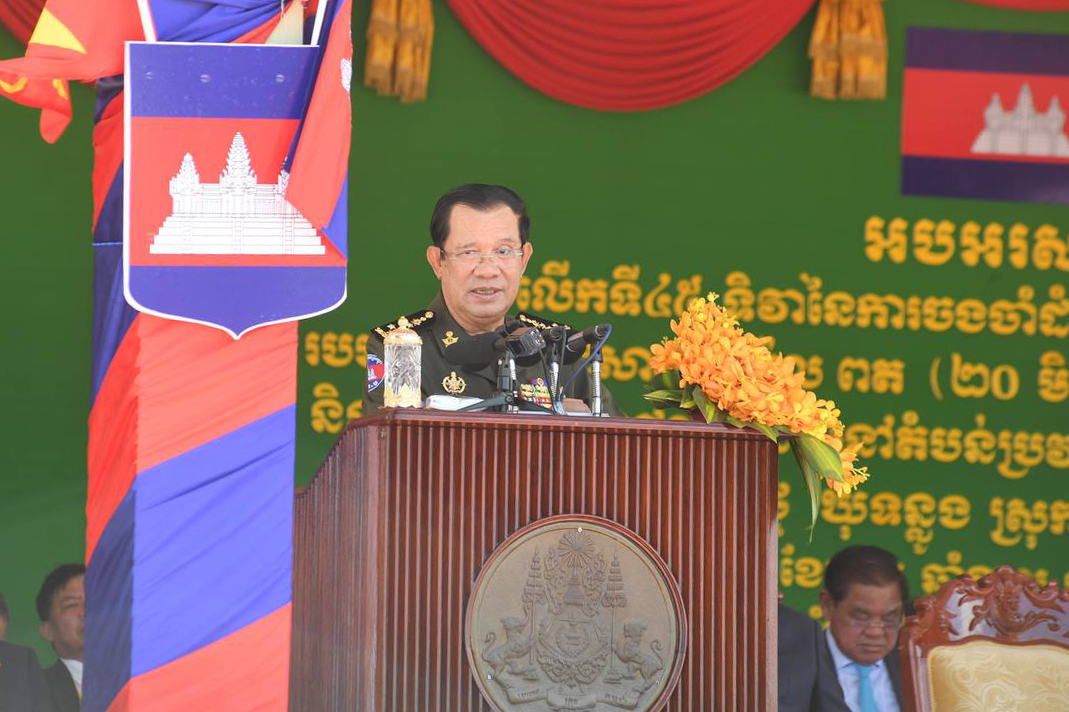
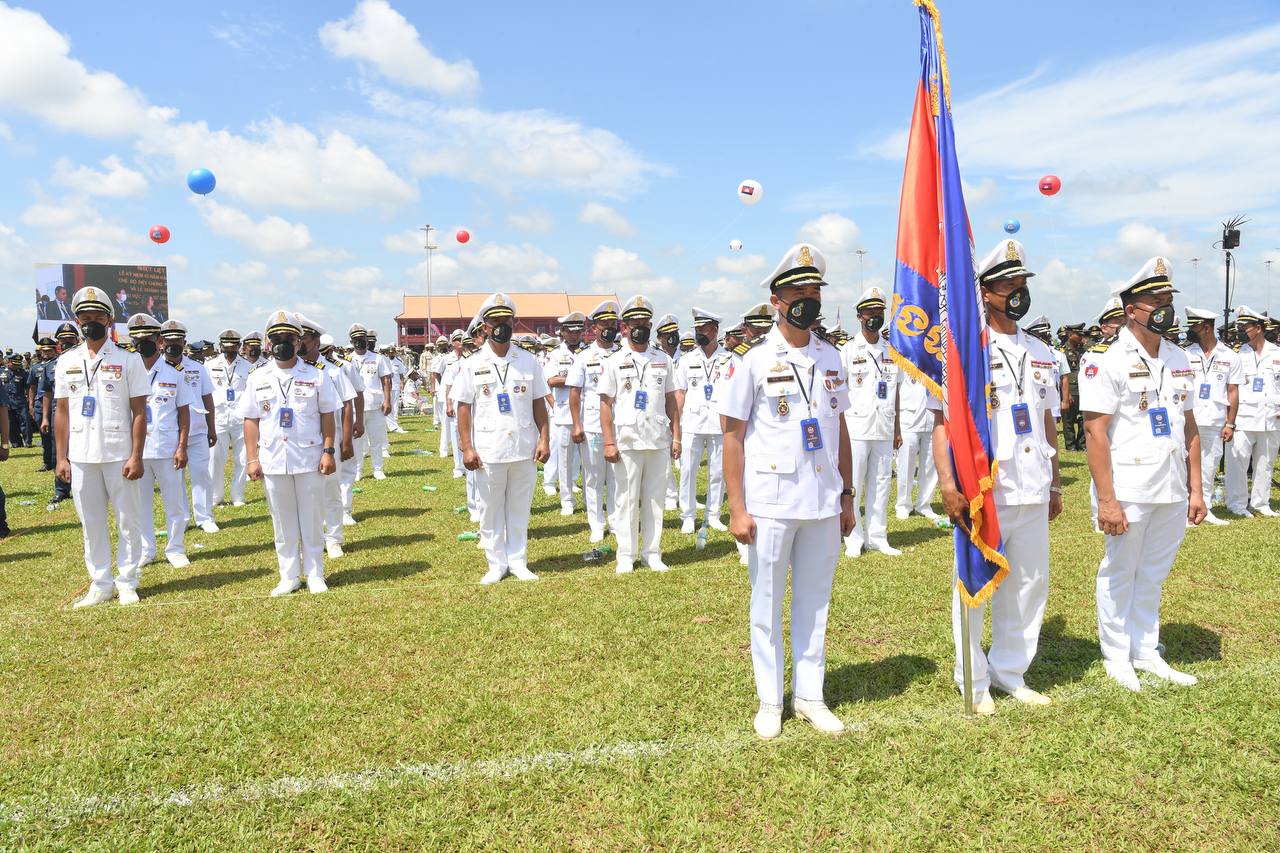
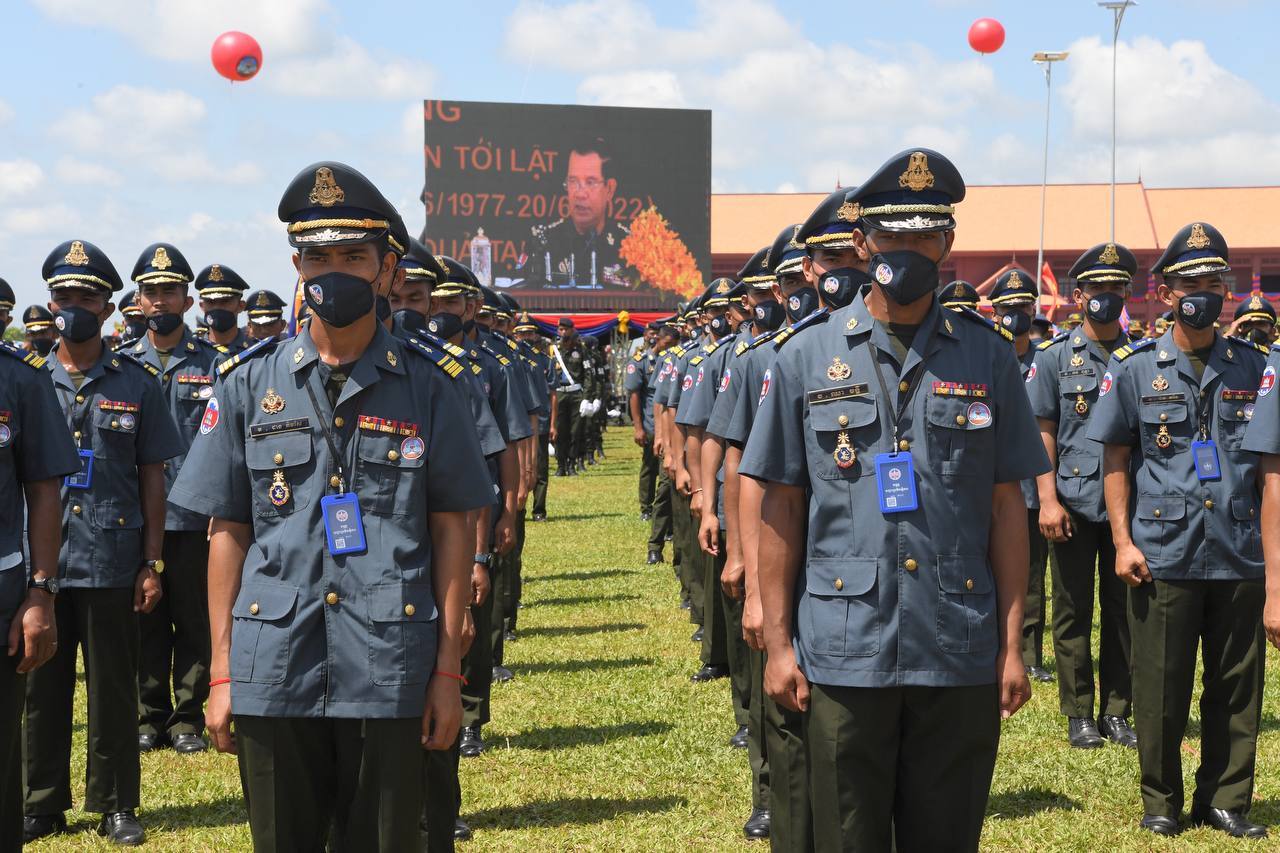
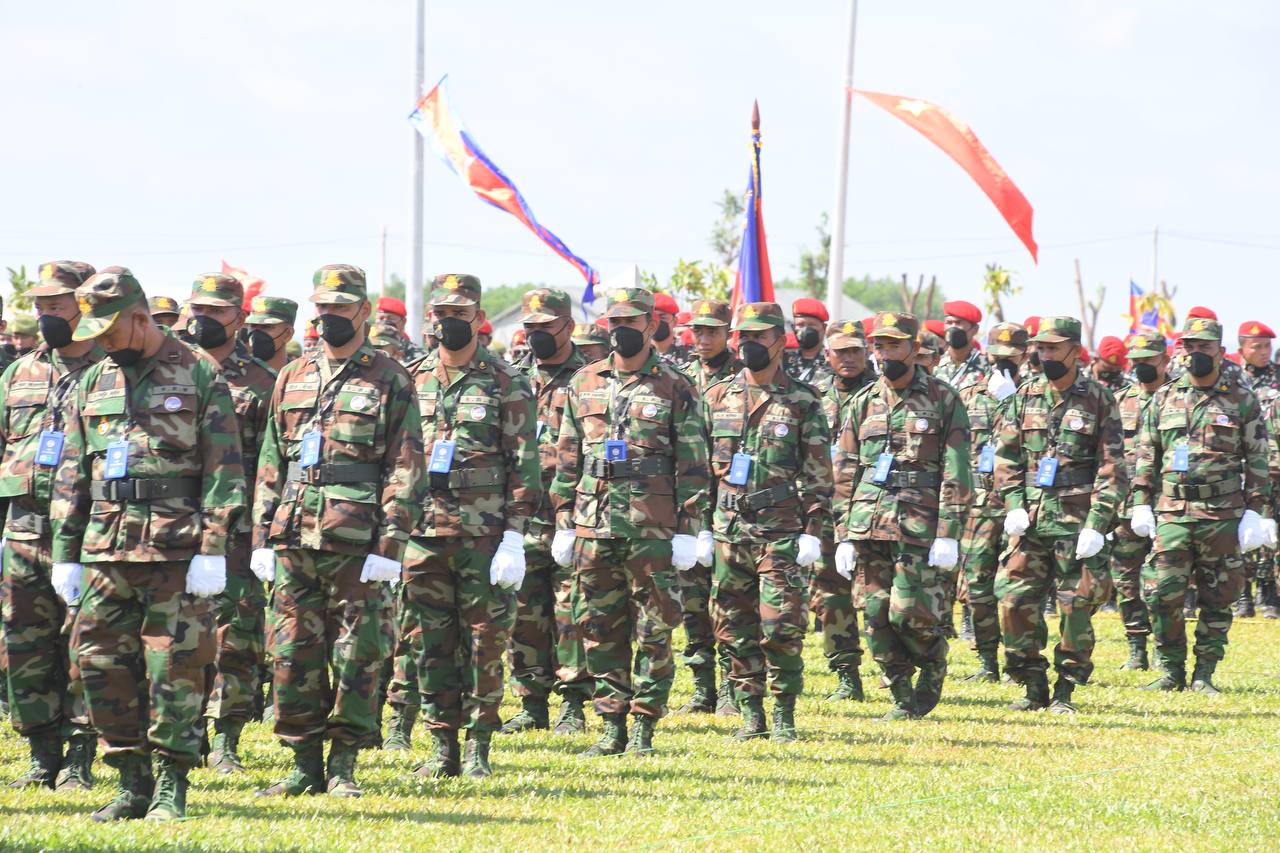
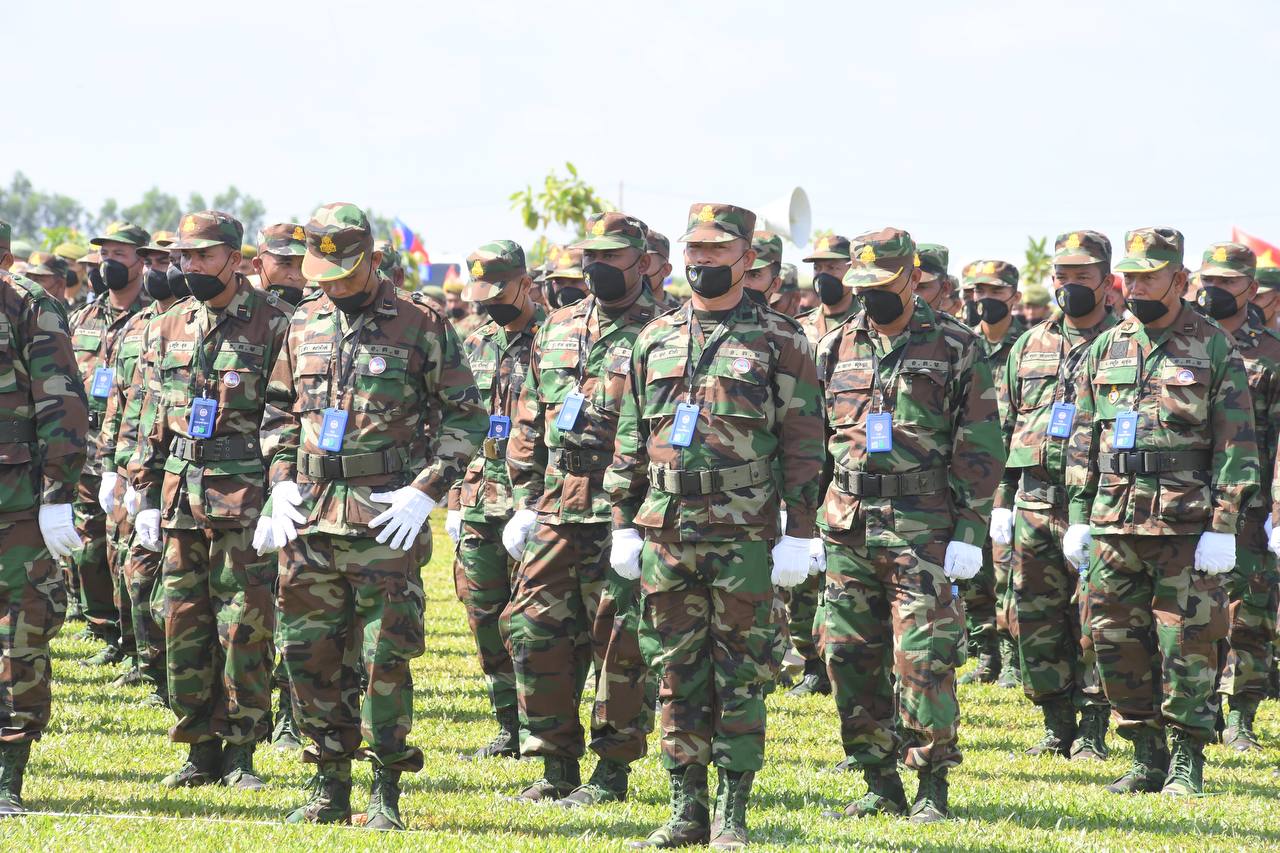
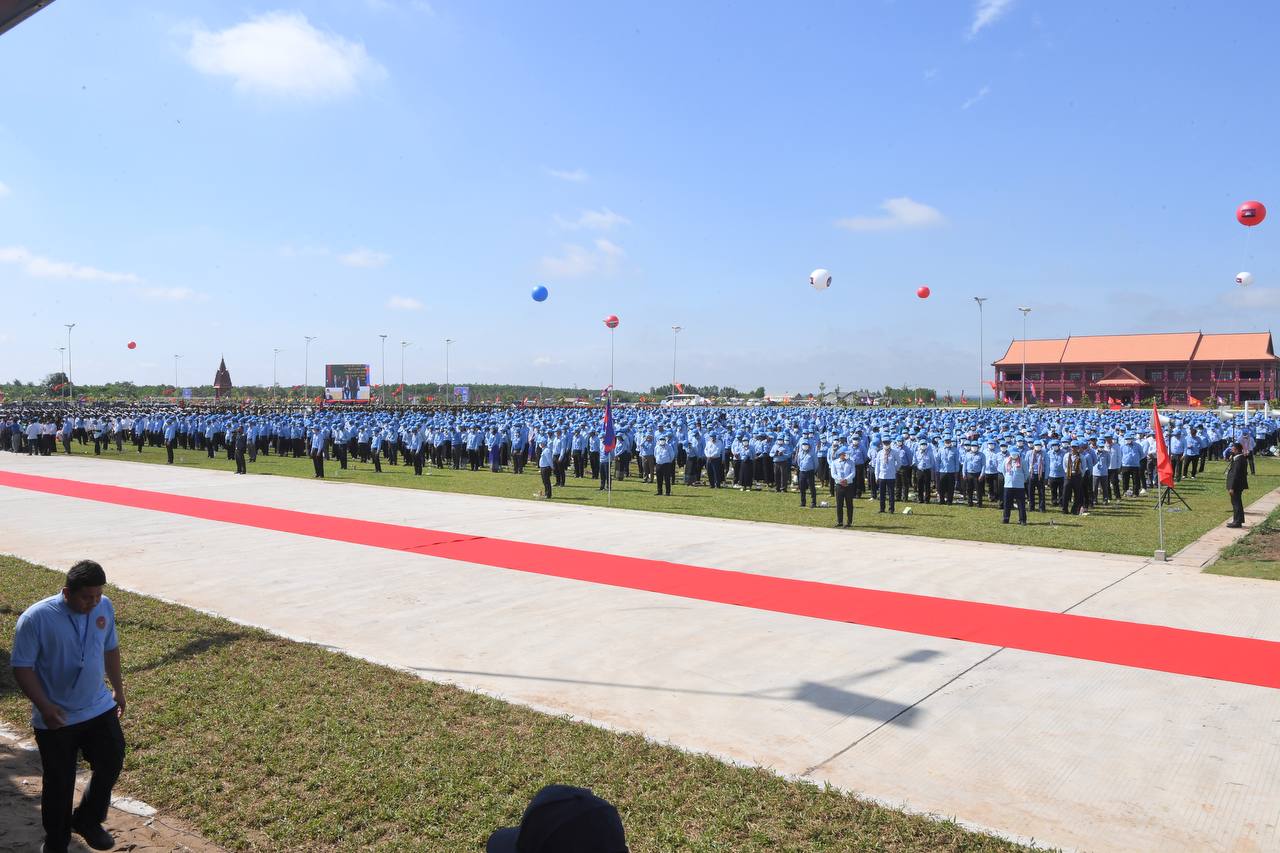
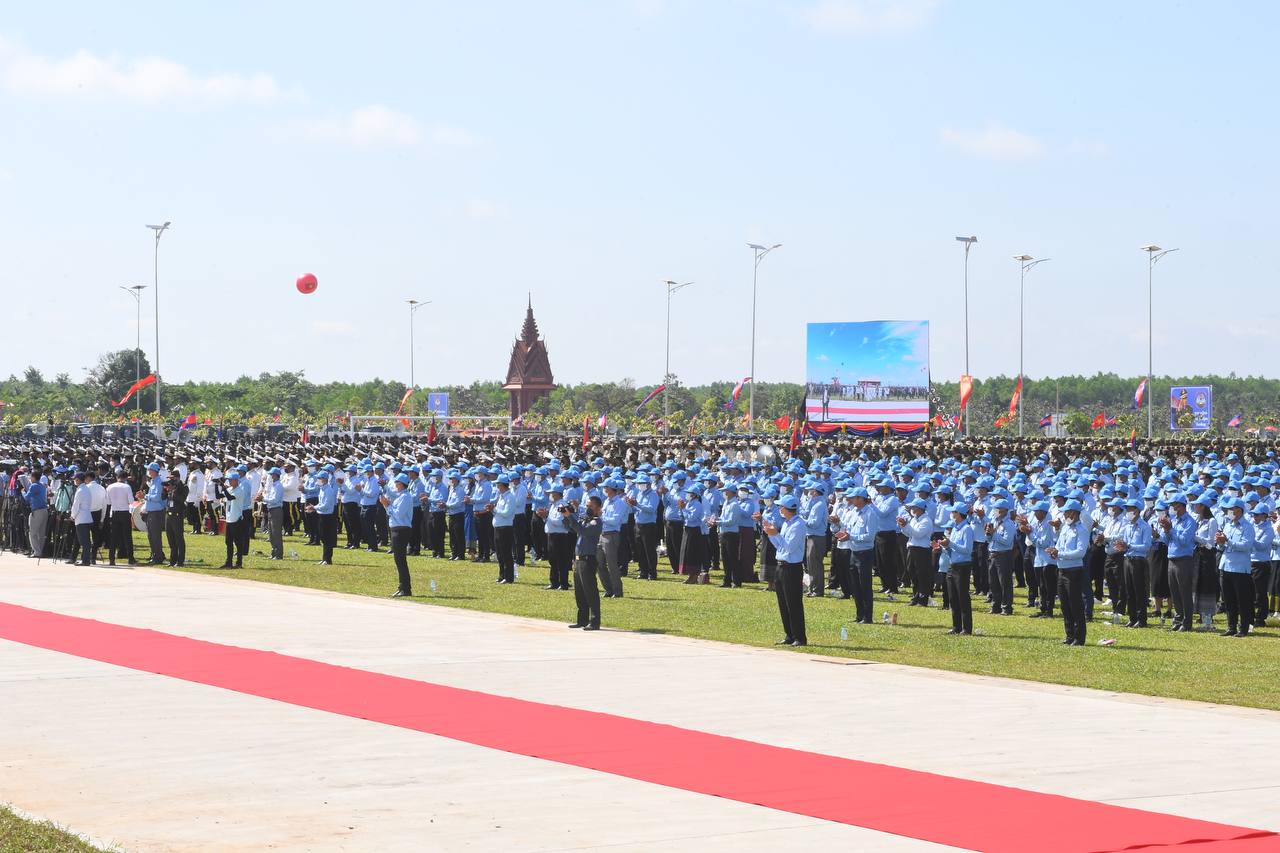
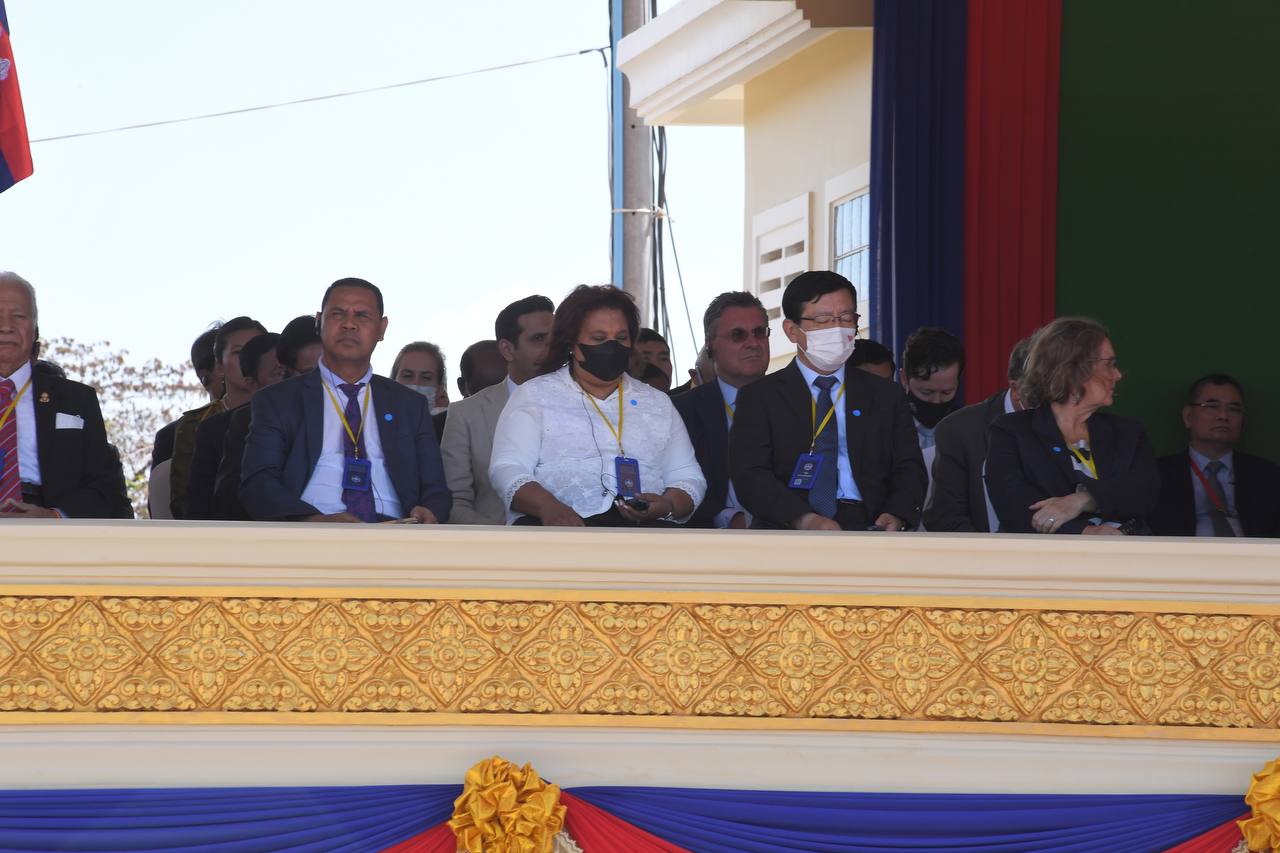
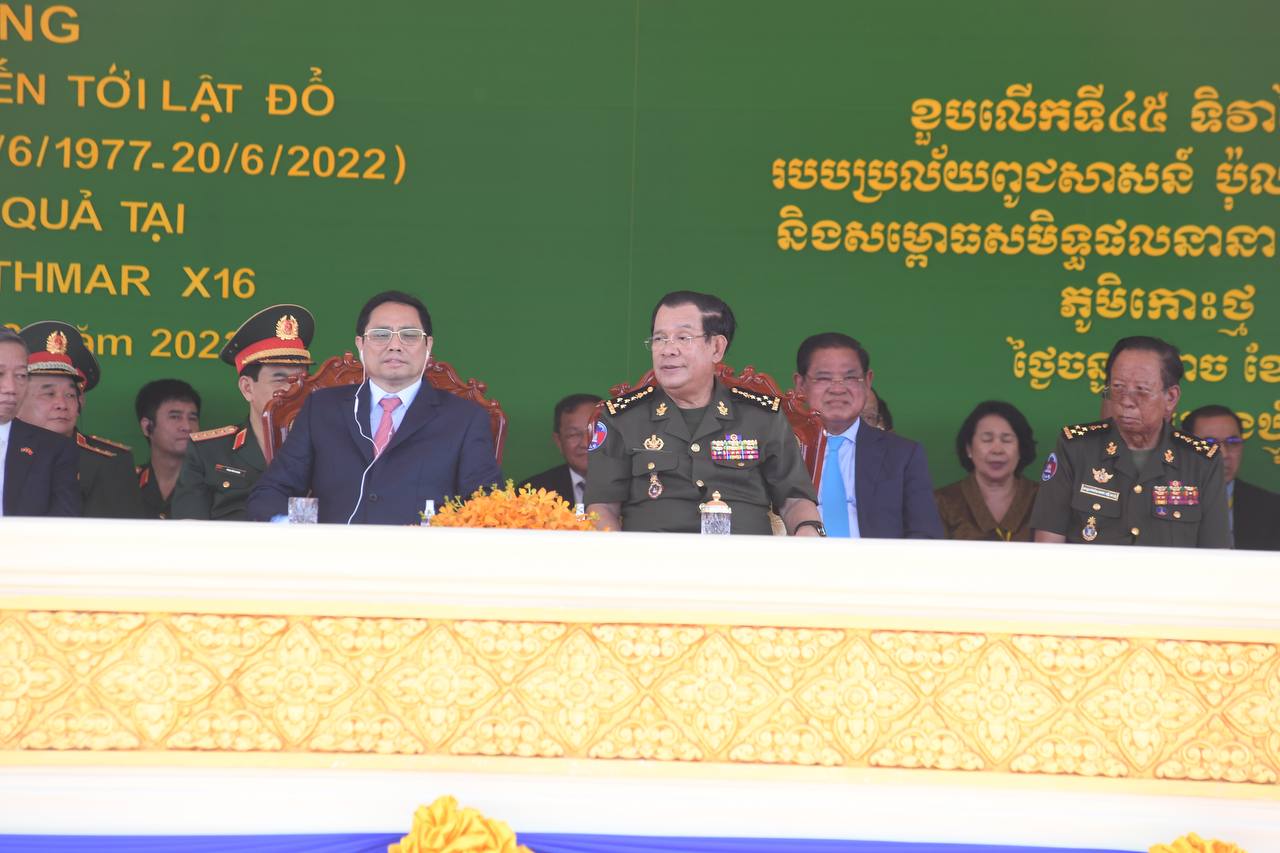
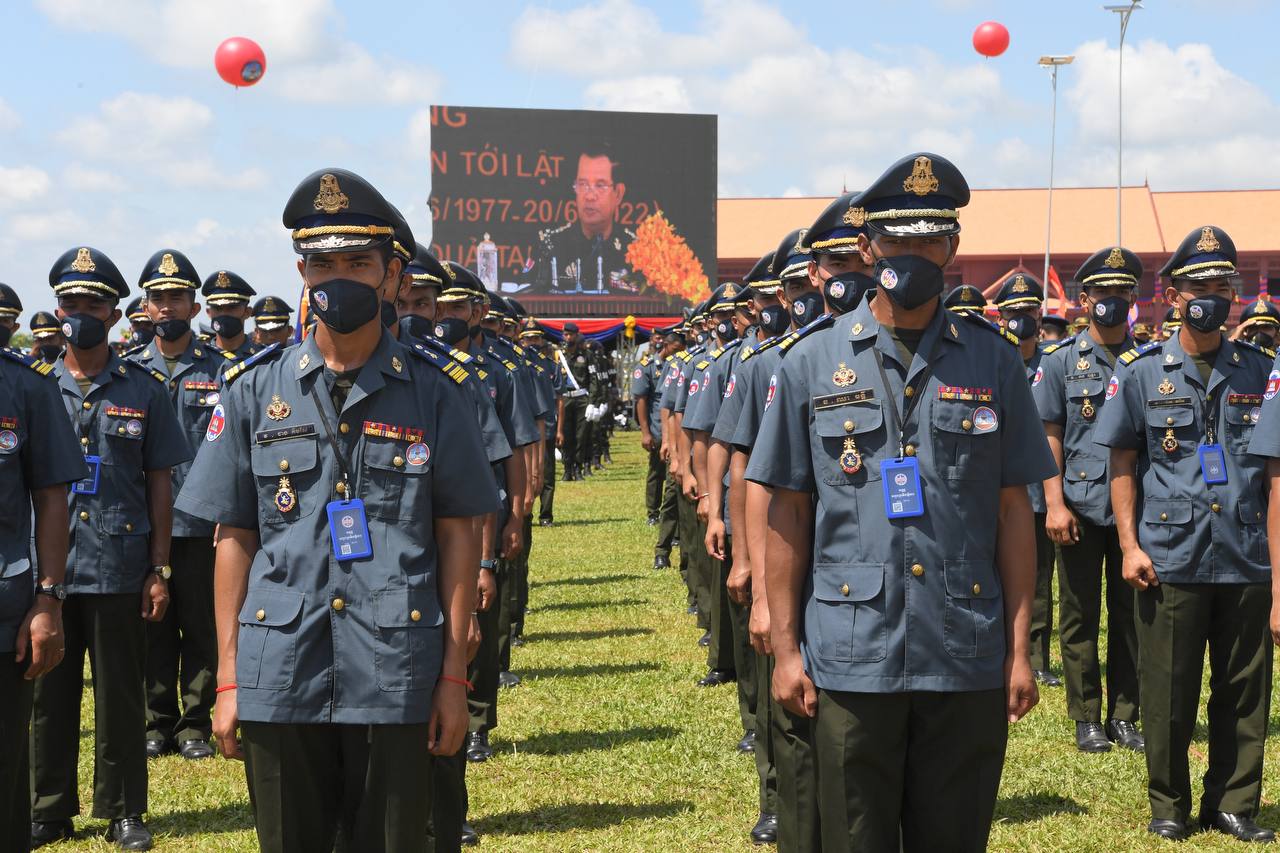
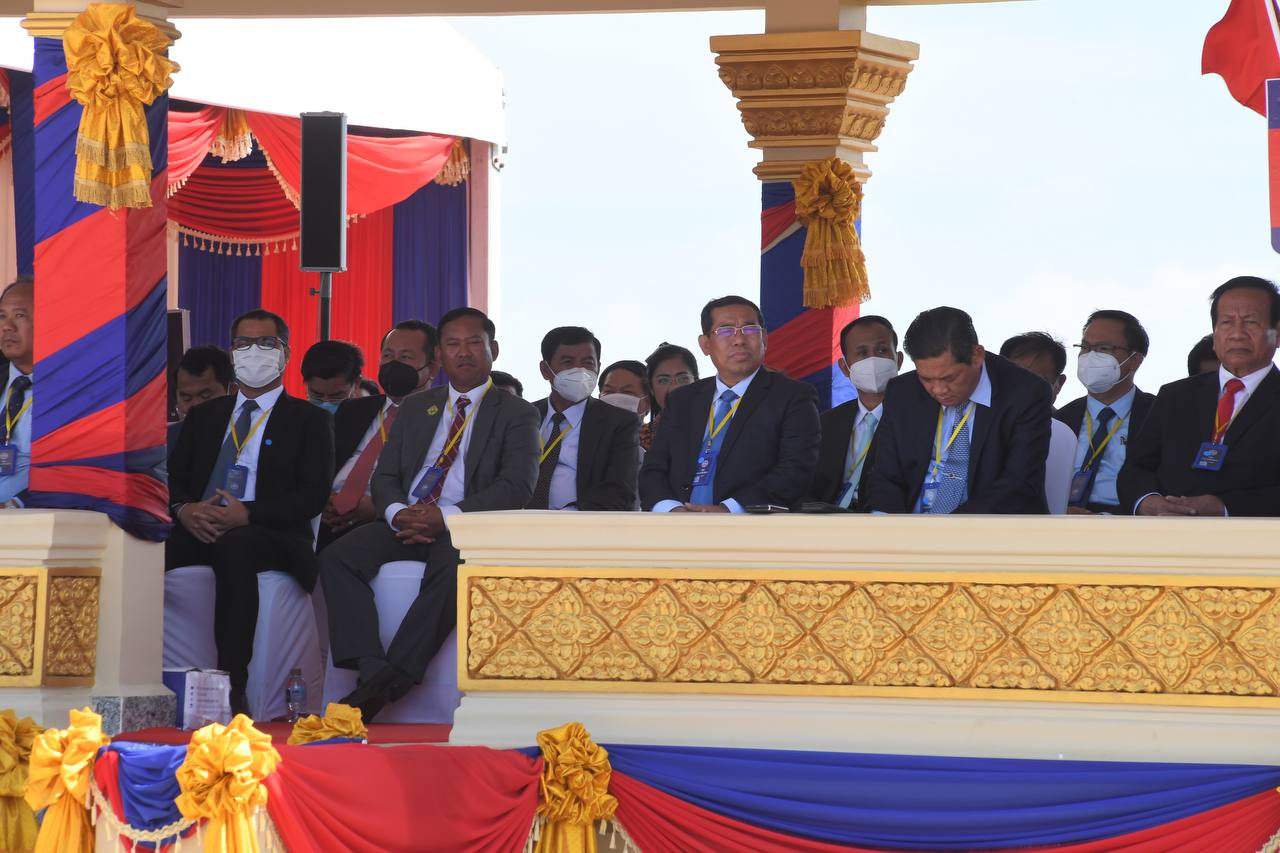
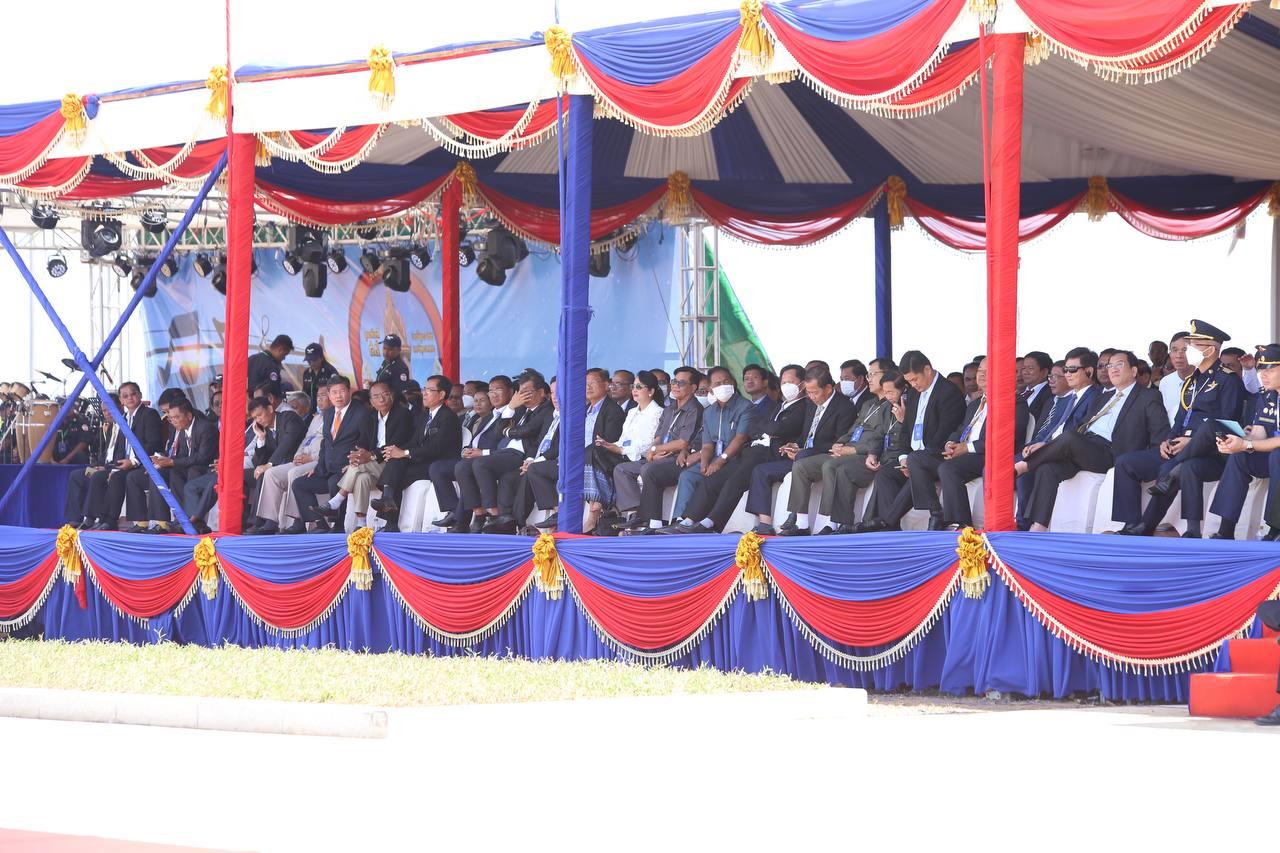
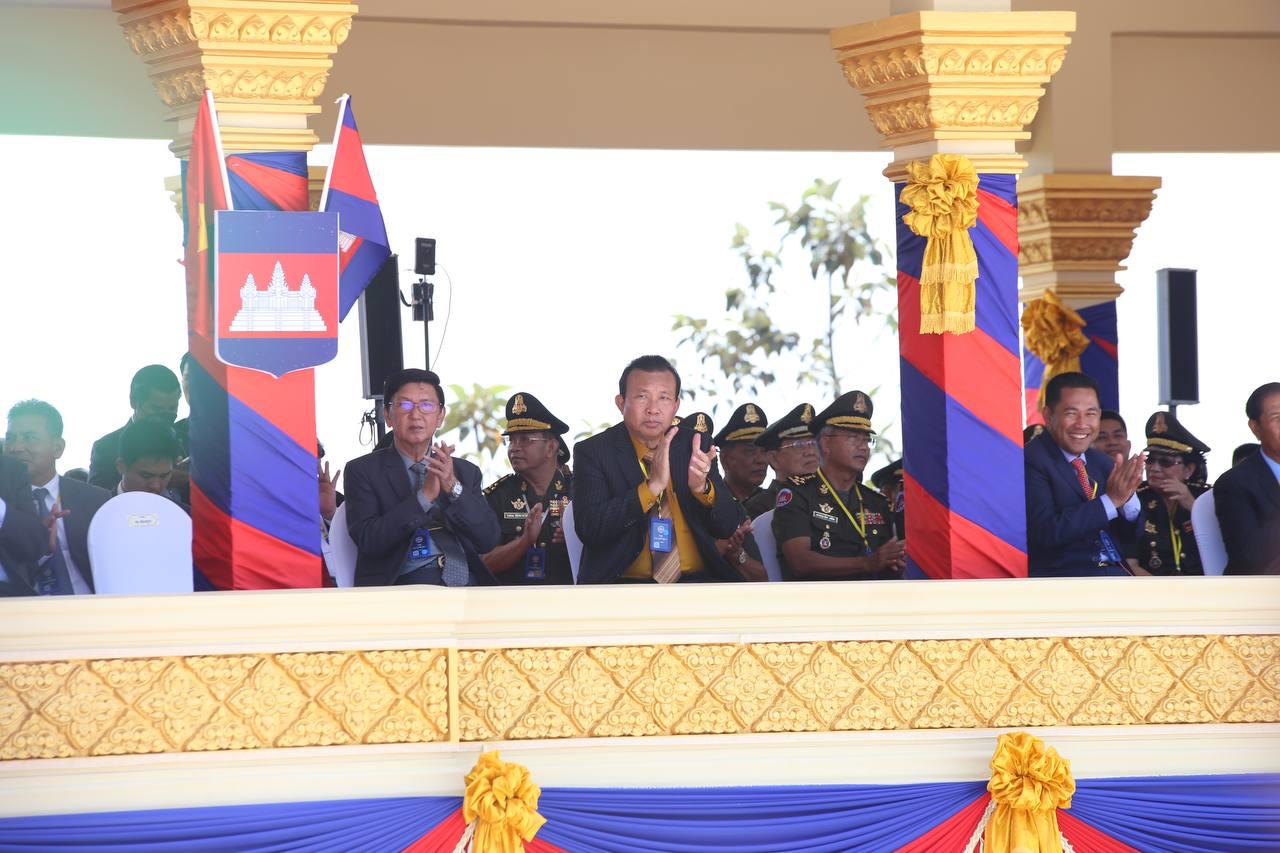
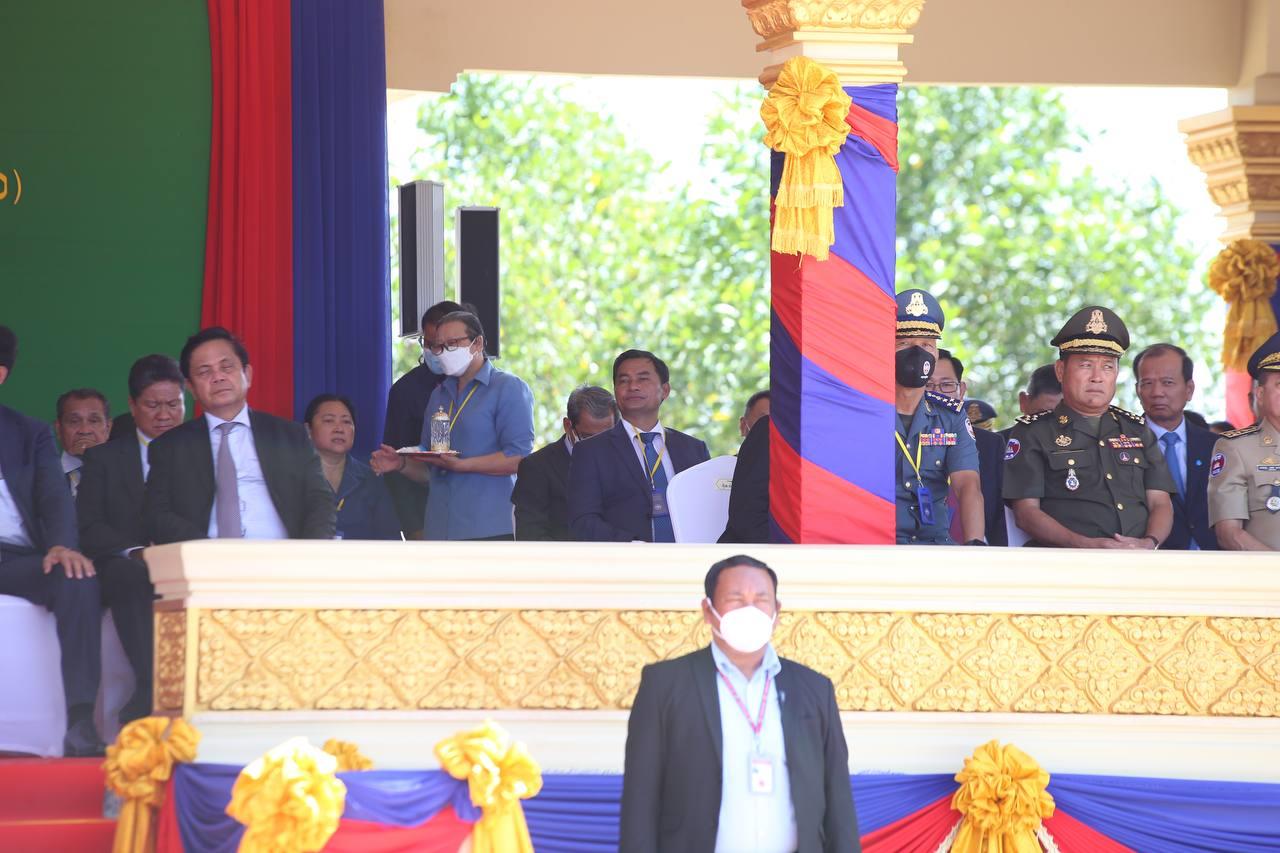
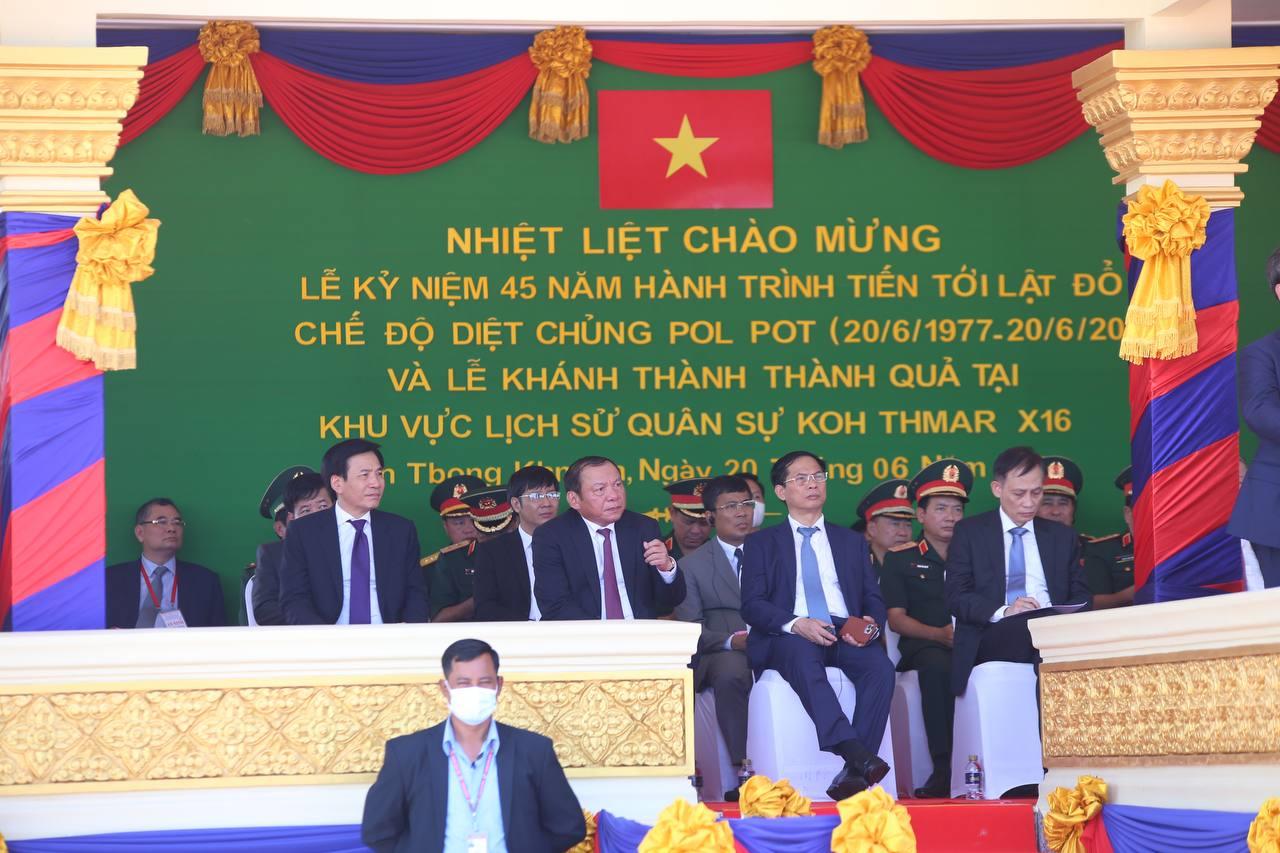
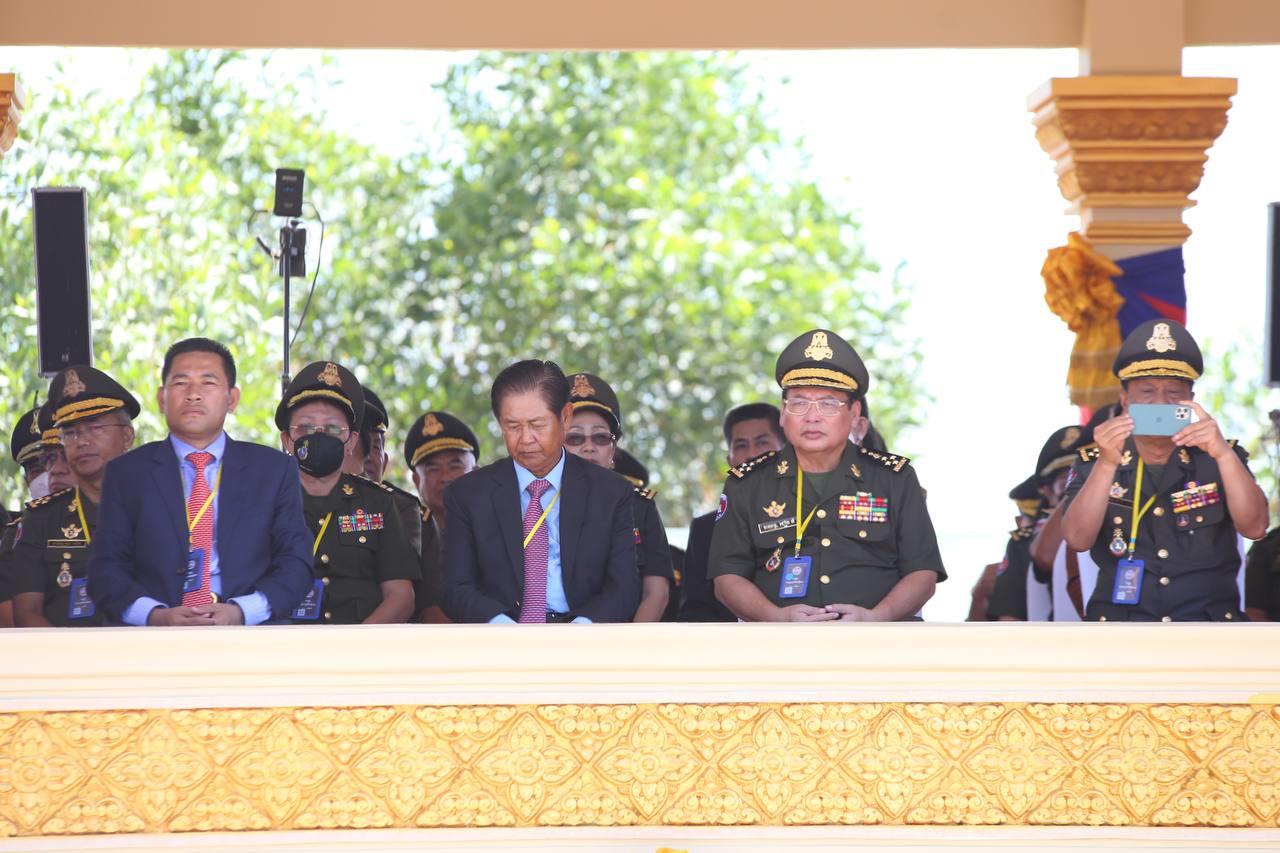
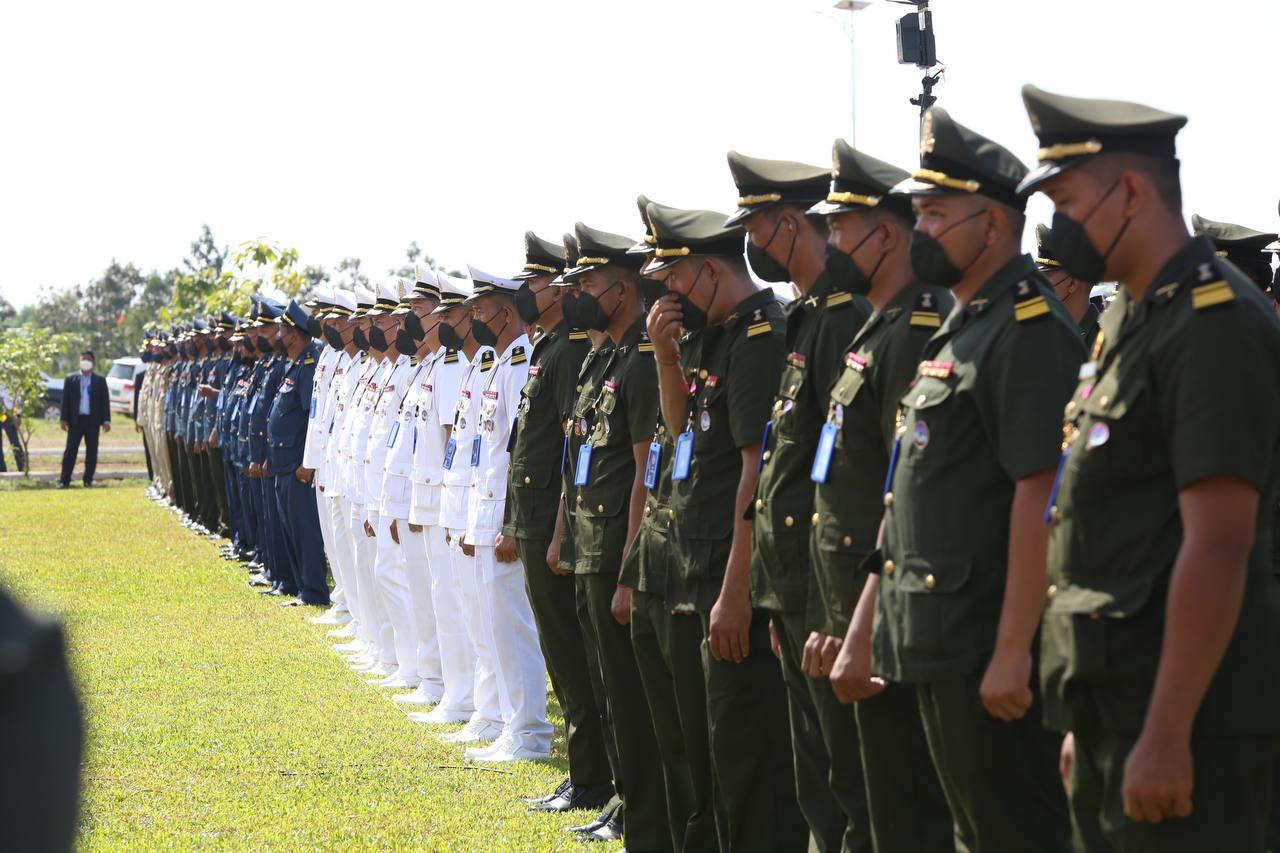
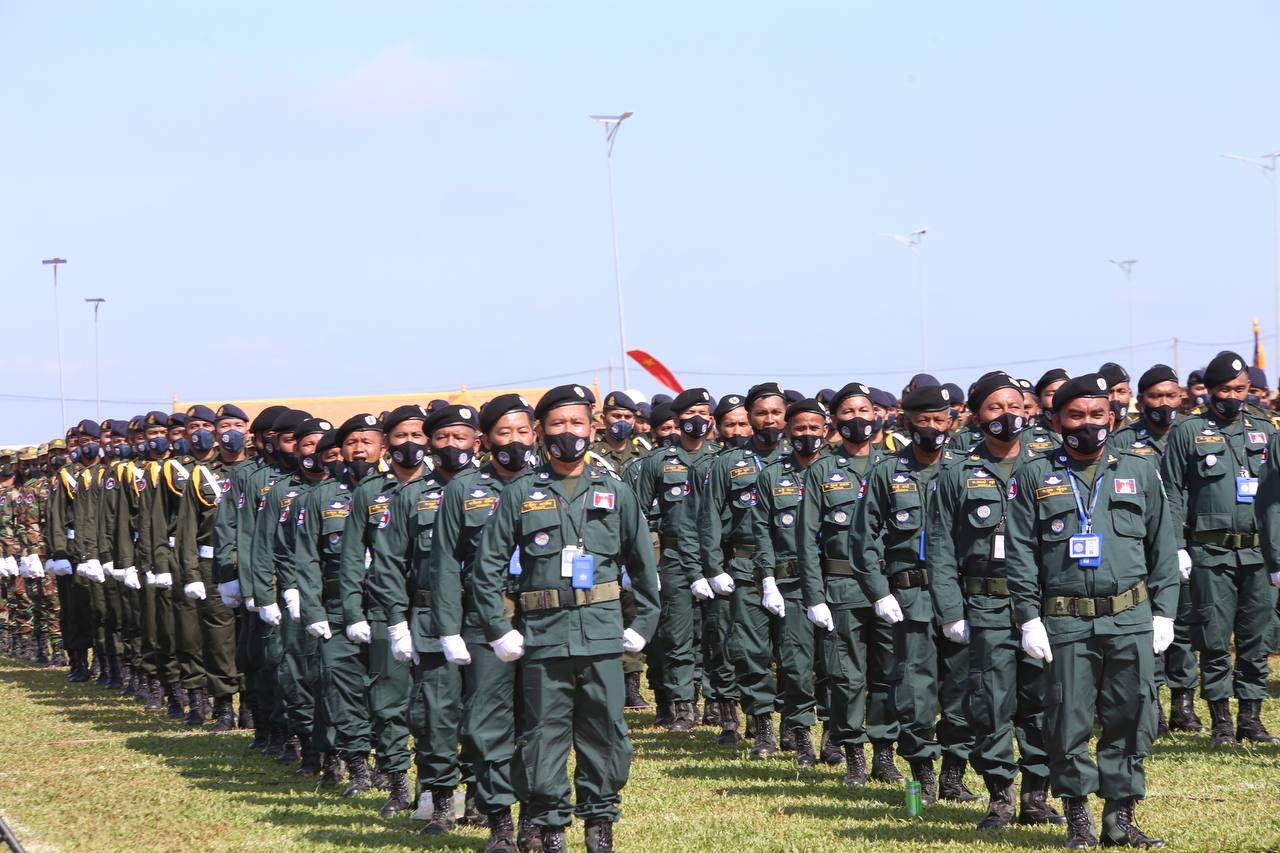
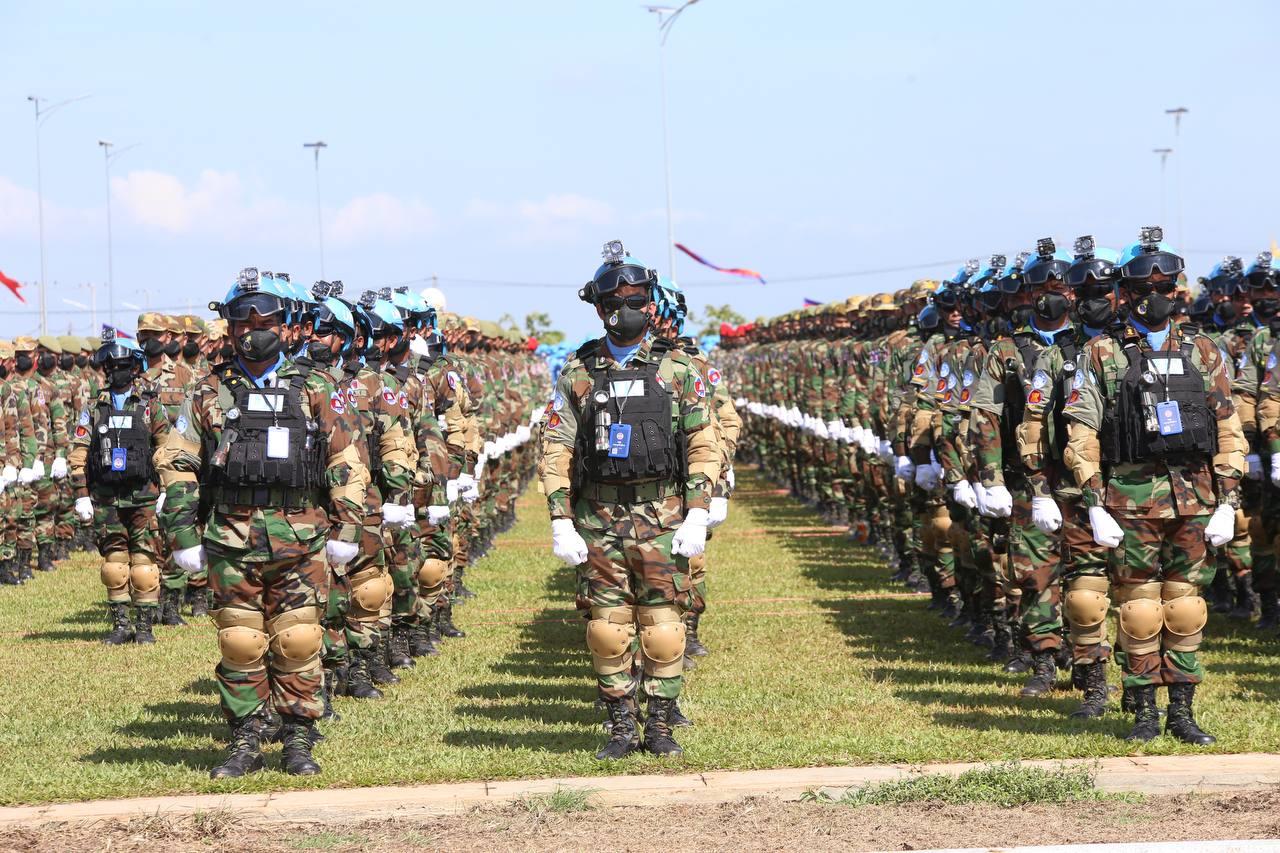
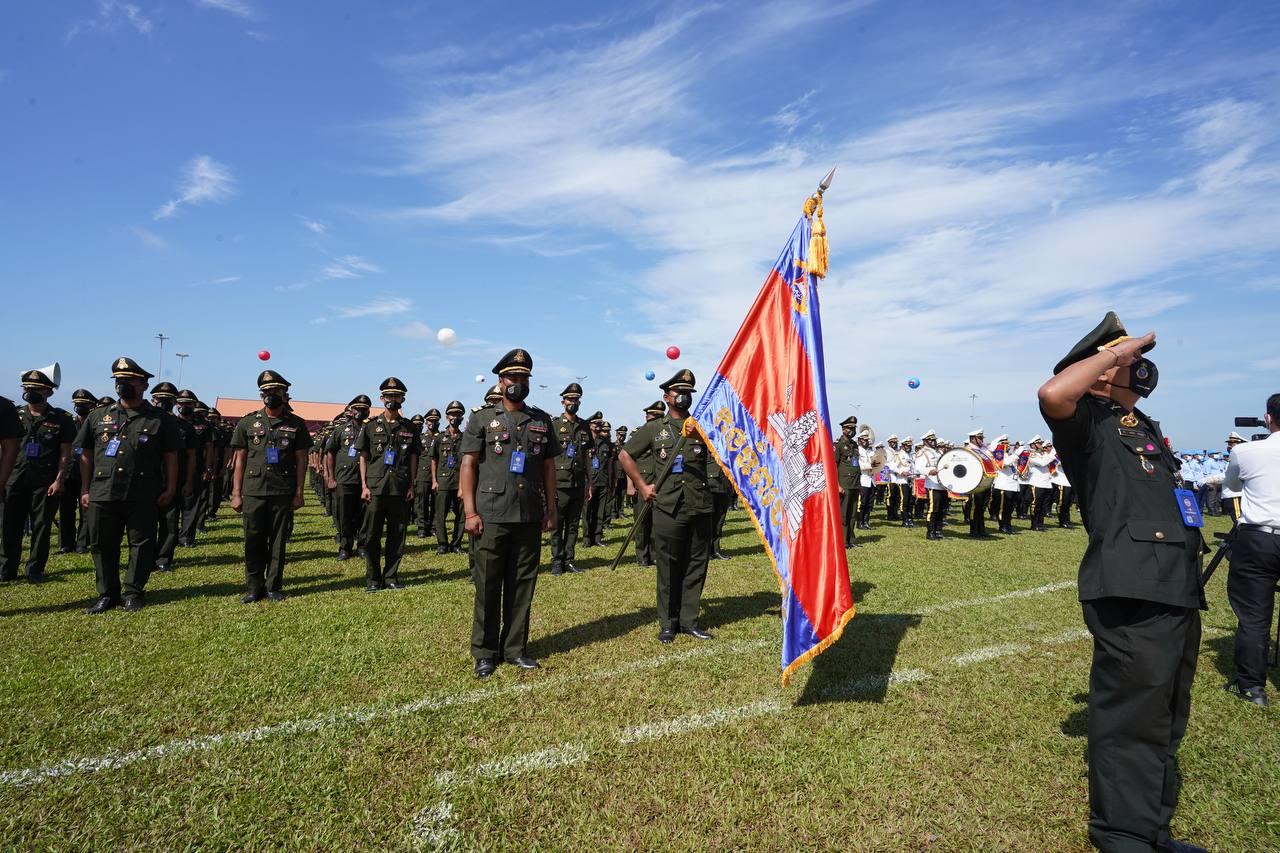
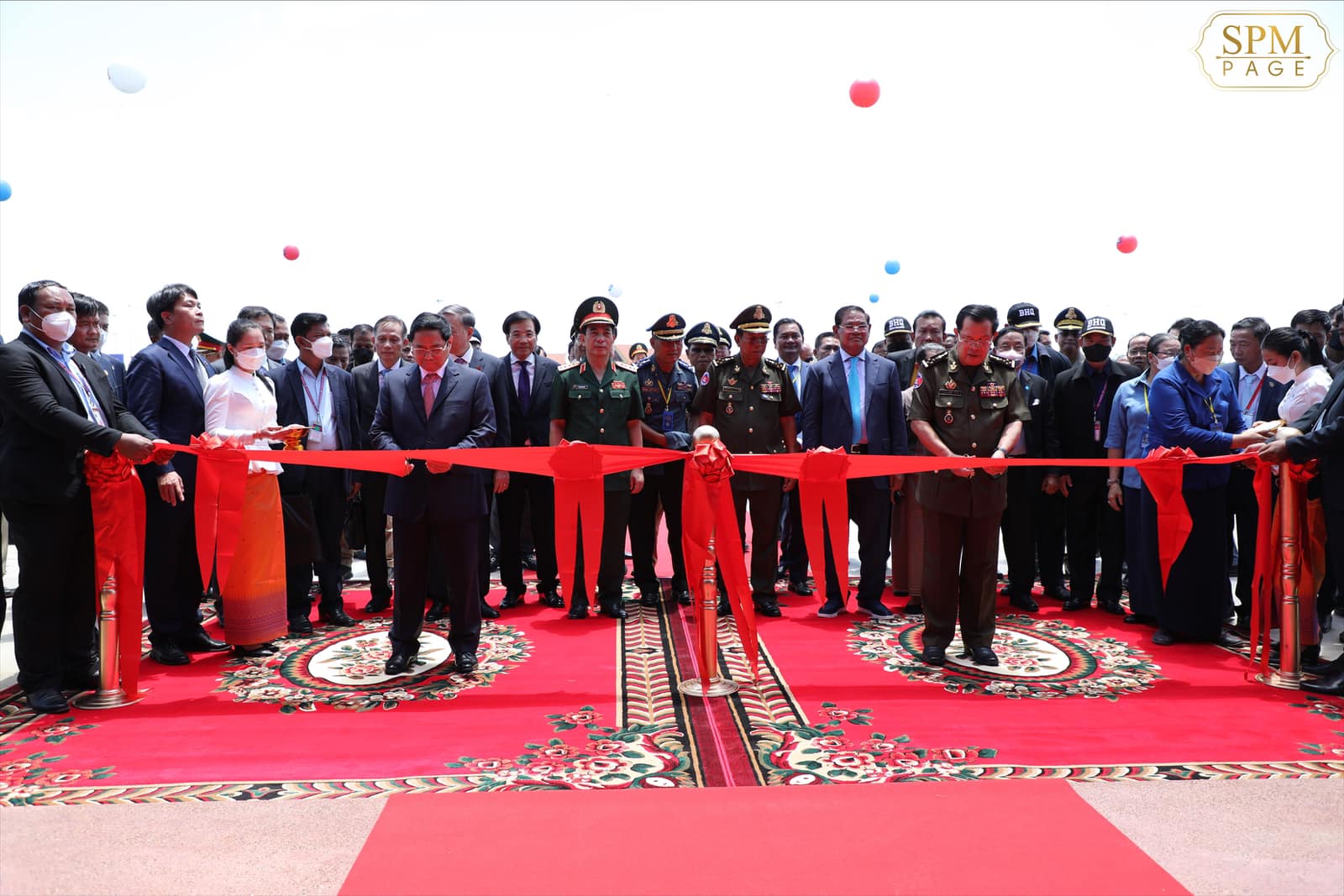
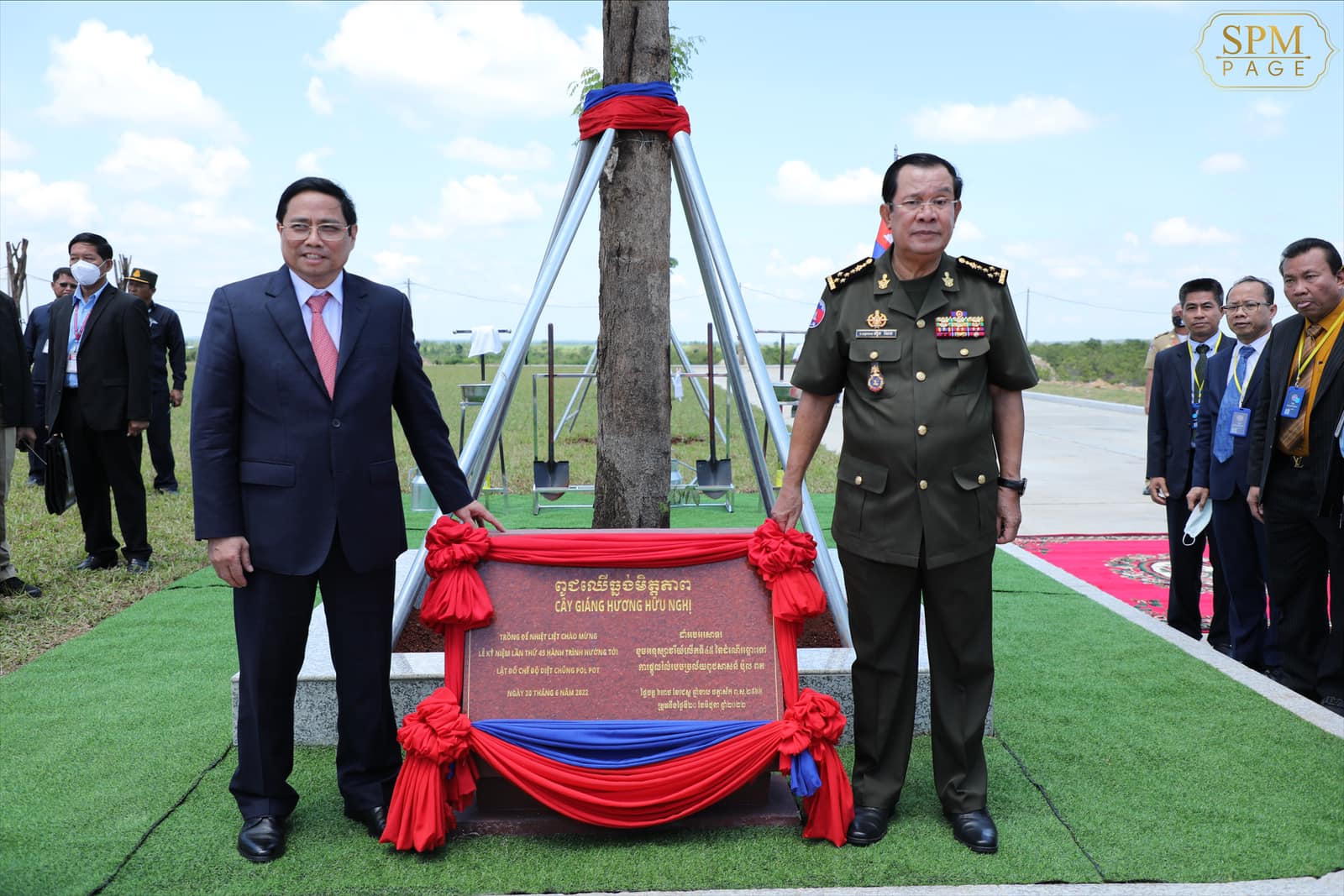
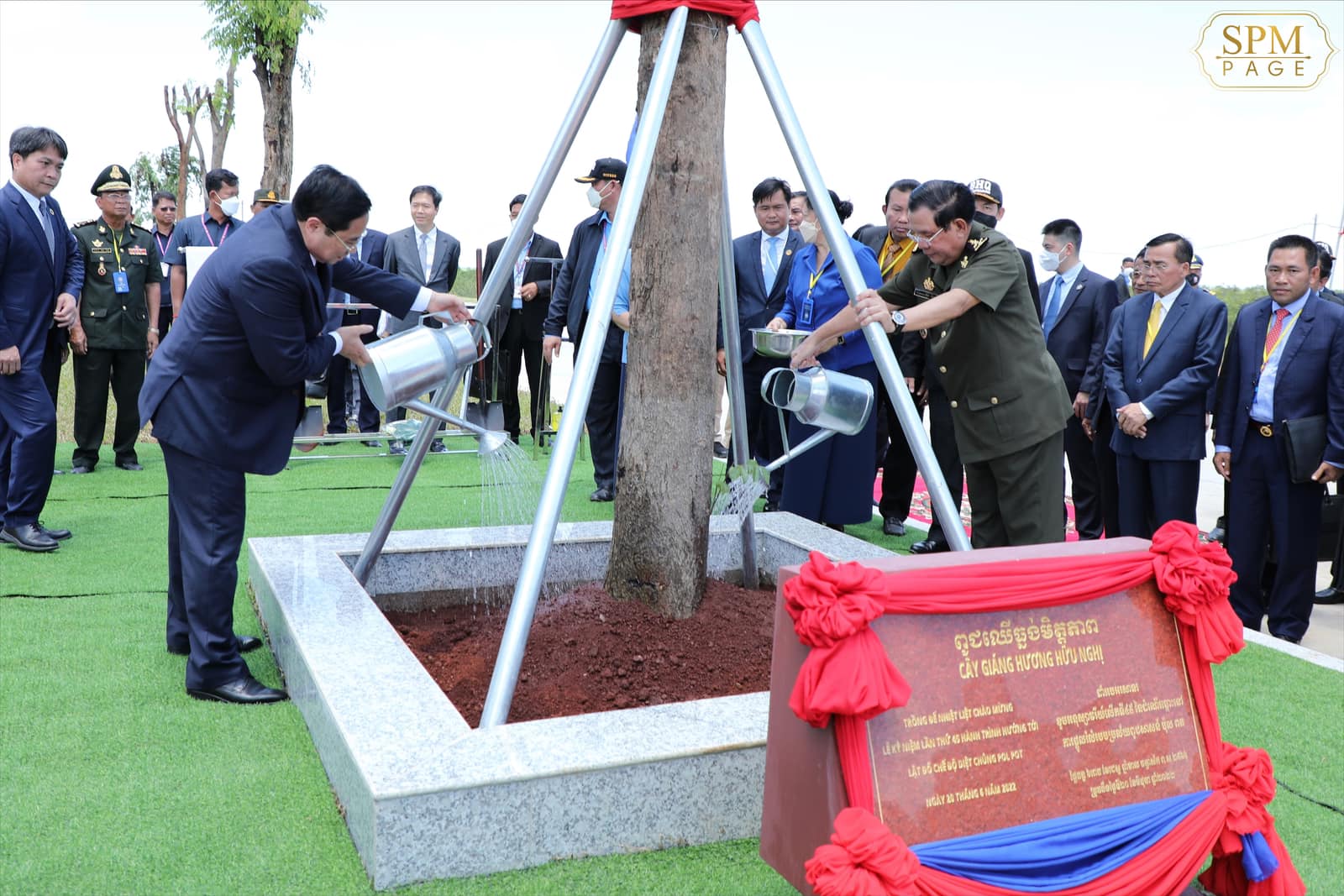
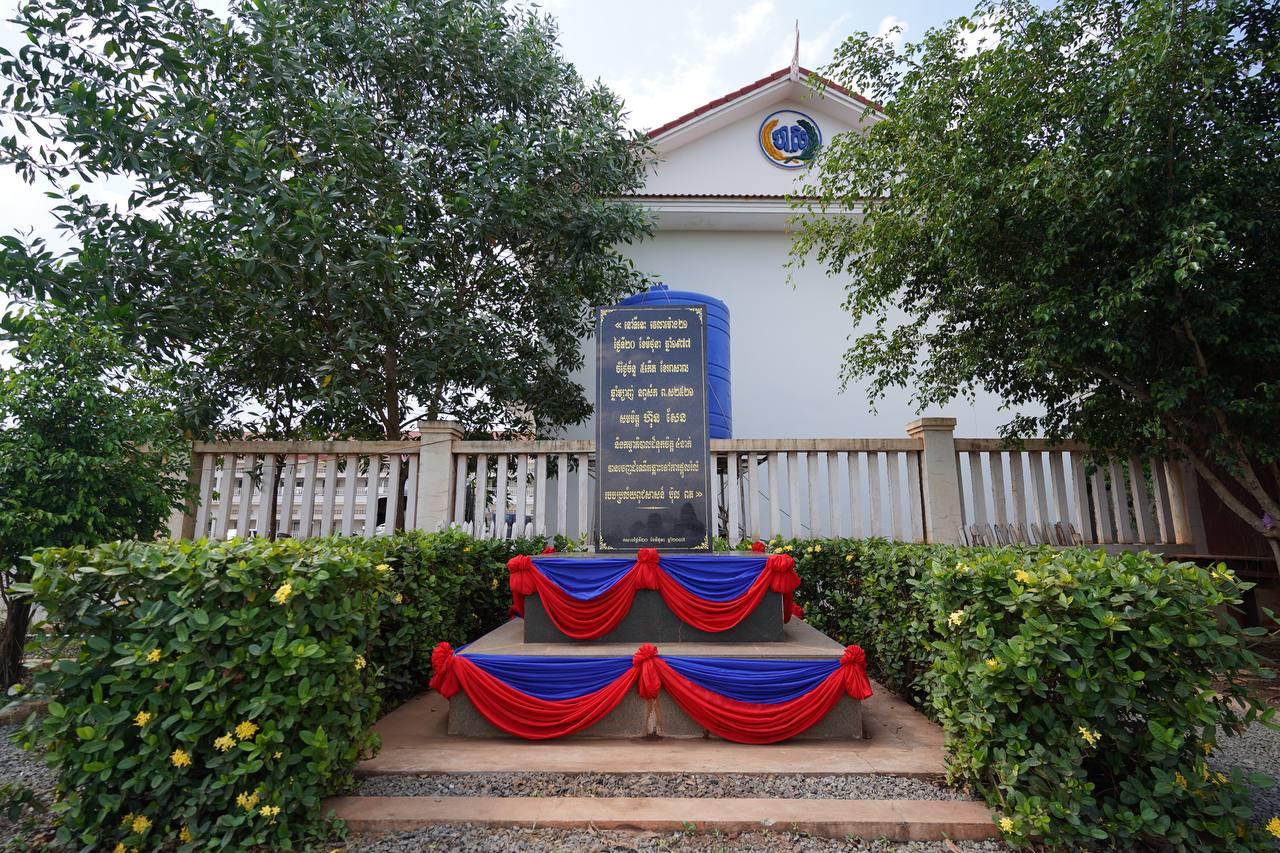

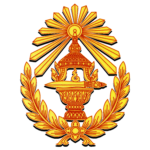
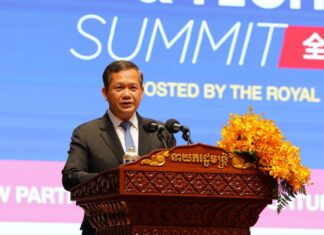


![Special Lecture by Samdech Akka Moha Sena Padei Techo HUN SEN, President of the Senate of the Kingdom of Cambodia, on “Leadership Experiences and Vision for Peace” to the 11th Plenary of the International Parliament for Tolerance and Peace (IPTP) [Unofficial Translations]](https://pressocm.gov.kh/wp-content/uploads/2024/12/468161445_1188047276010391_3141496335218348185_n-100x70.jpg)
